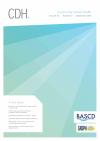Community Dental Health

- Cover Date:
- September 2018
- Print ISSN:
- 0265 539X
- Electronic ISSN:
- 2515-1746
- Vol:
- 35
- Issue:
- 3
Social gradient in caries experience of Belgian adults 2010
Objective: This study aims to explore the caries experience of the Belgian population in relation to social indicators. Basic research design: Data collection (2009-2010) consisted of an oral health questionnaire and examination during a home visit. Participants: Representative sample of the Belgian population (>5 years old). Only the economically active population was included for final analyses. Main outcome measures: ANOVA and multivariable regression analyses were used to reveal associations between social indicators, oral hygiene, untreated decay, DMFT and edentulousness. Results: 2742 participants completed the questionnaire, of whom 2563 were examined clinically. Most (53%) were female and mean age was 43.3 years (95% CI= 41.2-45.4). In the total population, 11.1 % were caries-free (DMFT = 0) and mean DMFT was 10.8 (95% CI = 10.0-11.5). In the analysed subsample, higher educated participants had lower DMFT scores than
those with low or no educational qualifications (p = 0.003). Employment status was associated with the presence of untreated tooth decay, especially in the youngest age group (p = 0.015), and with edentulousness (p = 0.02), with a higher risk among unemployed women of being completely edentulous (OR = 5.32; 95% CI = 1.75-16.12). Untreated tooth decay was related to frequency of tooth brushing and plaque index (p < 0.002 and < 0.001 respectively). Conclusions: Caries experience in Belgium, expressed as mean DMFT and proportion of untreated tooth decay, is more associated with level of education and employment status than with family income, which is still the main criterion for larger government allowances for healthcare in Belgium.
Key words: Dental caries (MeSH), Epidemiology (MeSH), Social Determinants of Health (MeSH), Adult (MeSH), Socioeconomic
Factors (MeSH)
© BASCD 2018
doi:10.1922/CDH_4254Lambert07
- Article Price
- £15.00
- Institution Article Price
- £
- Page Start
- 160
- Page End
- 166
- Authors
- Lambert M., De Reu G., De Visschere L., Declerck D., Bottenberg P., Vanobbergen J.
Articles from this issue
- Title
- Pg. Start
- Pg. End
- Dental Public Health In Action: Barriers to oral healthcare provision for older people in residential and nursing care homes: A mixed method evaluation and strategy development in County Durham, North East England
- 136
- 139
- Confirmatory factor analysis of the health literacy in dentistry scale (HeLD) in the Australian population
- 140
- 147
- Patients’ willingness to pay for dental services in a population with limited restorative services
- 167
- 172
- Oral health behaviours and oral health-related dietary behaviours: The interrelationship and determinants by latent class analysis
- 173
- 178
- Depressive symptoms and untreated coronal dental caries among adults ages 21-64 years, NHANES 2013-2014
- 179
- 185
